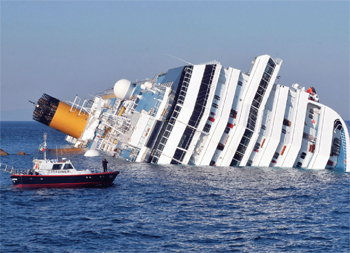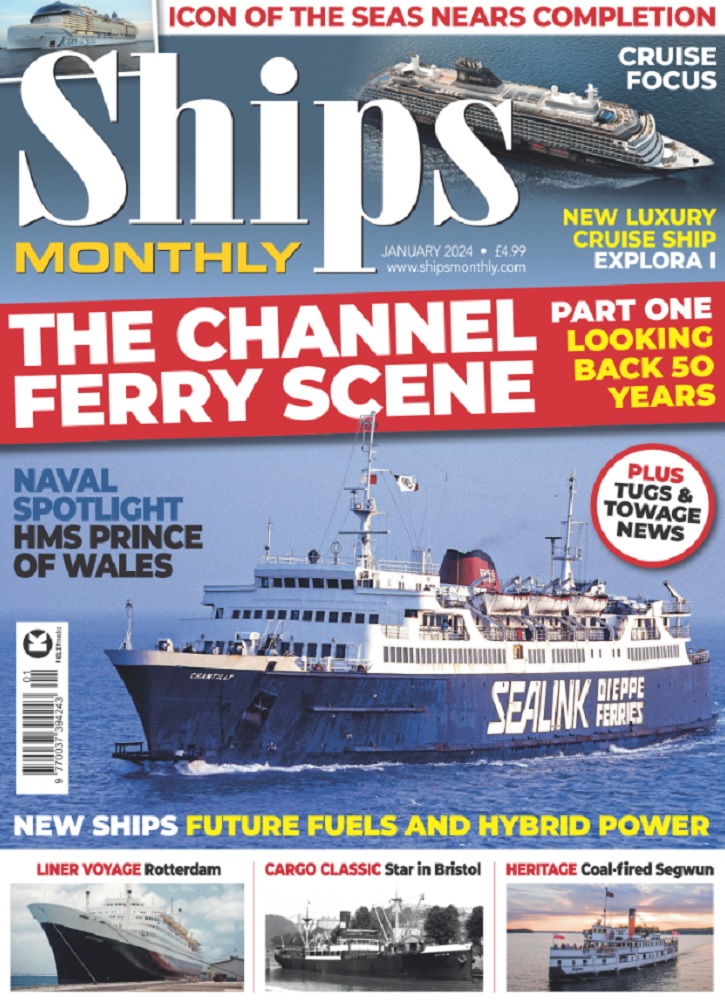In the Mediterranean plans are still being formulated for the salvage of the grounded cruise ship Costa Concordia, with SMIT Salvage appointed to first remove all oils and sewage. The cruise ship lies on her side, with the grounding damage above water – at least for the present. However, she lies on a sloping bed and could easily begin to slide and become submerged.
Smit has been taking off some of the 2,000 tonnes of oil on board as weather and sea conditions permit, using the bunkering tanker Elba and fuel barge Magic Duba. At the same time, several more bodies have been recovered from the wreck as divers continue to examine hull damage. The next step will be to patch the hull and return the ship to a relatively upright position, most probably using a combination of barges equipped with heavy winches, multiple anchors in the seabed and submerged airbags.
Costa has indicated it would like to see the ship removed in one piece. However, the 165ft gash is very large, making the engineering and installation of a patch difficult, and the vessel may not be worth saving because of as yet unknown damage.
Mike Lacey, secretary general of the International Salvage Union, noted: ‘You can see the terrific damage above the waterline, but who knows what has happened to the starboard side of the hull?’ This could call for much of the superstructure to be cut away prior to any attempt to refloat the hull, or the dismantlement of the entire ship. For its part, Carnival Corporation, owner of Costa, noted that it has insurance coverage for damage to the vessel, with a deductible of approximately $30 million, as well as insurance for third party personal injury liability subject to an additional deductible of approximately $10 million. The company said it self-insures for loss of use of the vessel, which it estimated would be approximately $85 to $95 million for the current fiscal year.
With legal actions now beginning to take place, however, it has revised its potential loss to between $375 million and $395 million for this year alone. Ten salvage companies – Smit, Svitzer, Mammoet, Titan, Resolve, T&T Marine, Donjon, Tito Neri, Fukada and Nippon Salvage – have been invited to present salvage plans, and an 11th firm, US salvage specialist Bisso Marine, may also bid. It could be that several salvors will work together to raise and remove the ship, with little expectation that it will be returned to service.


